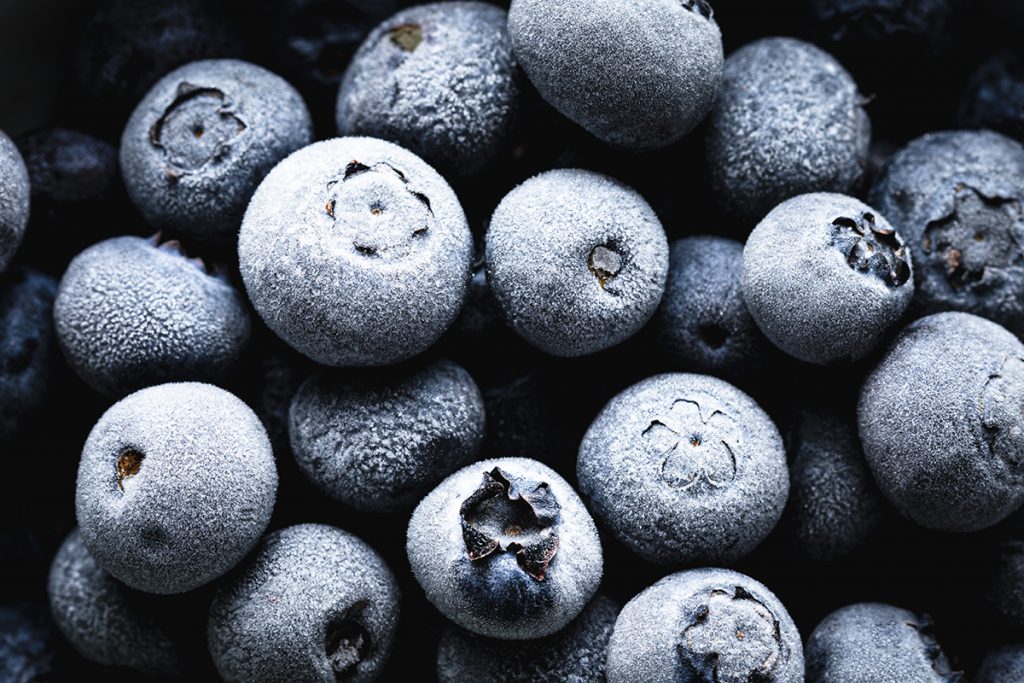Pack Your Freezer with These Dietitian-Approved Frozen Foods
Skip past the frozen pizzas and ice cream and find these nutritious and budget-friendly foods in the freezer aisle.

Are any frozen foods healthy? It’s a fair question when you consider that many of the items in the frozen food aisles don’t have what you’d call a stellar nutritious reputation (microwave meatloaf, we see you!).
Yet, behind those glass doors are a few items that offer up impressive nutritional benefits not to mention some serious time-saving potential in the kitchen.
It may seem logical to think that fresh always trumps frozen, but, in several cases, this may not always be true. Some foods don’t always have to be fresh to be best.
These four sub-zero heroes will give you plenty of reasons to visit the freezer aisle at your grocery store more often.
Healthy eating and fitness go together! SilverSneakers classes and events are happening right now at participating gyms, online through SilverSneakers LIVE, and at community centers near you. Activate your free online account to get started.
1. Frozen Vegetables
Nearly every nutrition expert will be quick to tell you that it’s a good idea to eat more vegetables. Their unique nutritional stew of fiber, antioxidants, vitamins, and minerals are a key to lasting health.
But sometimes fresh options in the supermarket don’t look so fresh and are expensive, especially when out of season locally. That’s where frozen veggies can come in handy.
Vegetables destined for the frozen food aisle are picked when they are at their peak ripeness and very soon after flash-frozen to retain all their nutrients and flavor. Some vegetables are cooked quickly in hot water before freezing to preserve their color, smell, flavor, and nutrition’s.
In some cases, frozen veggies may be superior to their fresh counterparts in the produce aisle. Some fresh veggies go through long shipping and storage time that can impact their flavor and nutrition.
In fact, a study published in the Journal of Food Composition and Analysis found that frozen veggies like broccoli, green beans, and corn often retained more nutrients like vitamin C and folate than fresh versions.
Frozen veggies are also super convenient. They save time and effort. If you have a condition like arthritis in the hands that makes it harder to prep food, you’ll appreciate the ease of pre-cut frozen veggies.
They also have a long shelf-life, so it’s easy to keep veggies on hand for last-minute dinners. Simply toss a few cups of frozen broccoli florets into a soup, add thawed corn kernels to a salad and use shelled frozen green peas in pasta dishes. With a quick heat in the microwave, pre-chopped frozen vegetable mixes can be your answer to an ultra-quick side dish.
Recommended reading: 7 Nutritionist-Recommended Recipes You Can Make in a Microwave
2. Frozen Fish
Fish is an excellent source of lean protein and omega-3 fats that keep you healthy as you age. A recent study in JAMA Internal Medicine suggests that consuming more fish and less of other meats, particularly processed meat and red meat, is good news for heart health overall. The American Diabetes Association recommends eating at least two servings of seafood a week.
But fish isn’t always the most budget-friendly protein, especially if you live far from coastal communities. That’s why you shouldn’t give frozen seafood the cold shoulder. It’s often priced more economically than its fresh counterparts, but the quality can be just as good. (And get this: a lot of the “fresh” fish behind the fish counter has actually been previously frozen.)
Casting your line for dinner in the freezer section lets you buy a bunch in advance and use it up when desired over a few months. You can’t do this with fresh seafood, which has a short shelf-life.
When shopping for frozen fish look for options that are not coated in a batter, which can add a significant amount of calories and sodium. Check the nutrition label for sodium content, too. Some frozen fish has a preservative, sodium tripolyphosphate (STPP), added to it that can up the sodium content. If you’re watching your salt intake, compare labels to find the lowest sodium option.
Frozen fish is much easier to cook than other frozen proteins. You can cook fish fillets straight from the freezer and skip the thawing process if you haven’t planned ahead. Simply remove fish from its packaging and rinse under cold water to remove any frost or ice that’s accumulated. Pat it dry with paper towel and then brush with a thin layer of oil before seasoning as desired. Prepare as usual, adding a few minutes to the cooking time to account for the lack of thawing.
Recommended reading: Vitamin D: Are You Getting Enough of This Key Nutrient?
3. Frozen Fruit
Fresh local cherries and blueberries at the height of summer are not to be missed, but their season is fleeting. The rest of the year, turn to bags of frozen fruit for that same summer taste without the hefty off-season price tag.
As with vegetables, there’s a common misconception that frozen fruits are not as healthy as fresh. But research shows this is not the case. Fresh fruit can lose nutrients during long shipping and storage, and the flavor might not be as good when it’s not in-season locally.
A study in the research journal Nutrition shows that people who sneak more frozen fruits and vegetables into their diets take in higher amounts of must-have nutrients like fiber, calcium, and potassium.
Frozen fruit can save you a lot of money, too, especially for things like berries. Plus, you can buy frozen fruit in bulk at a lower price per ounce without worrying about it going bad.
You might not be able to bite into a frozen peach like a fresh one, but frozen fruit can be used in lots of other ways.
Subscribe to our newsletter
It's quick and easy. You could be one of the 13 million people who are eligible.
Already a member? Click to discover our 15,000+ participating locations.
Follow Us
Frozen items like berries and peaches can go straight from the freezer into smoothies, oatmeal, sauces, and baked goods like muffins. Give them a light thaw and add to yogurt for a homemade fruit-flavored yogurt. Or snack on frozen blueberries straight from the freezer for a cool treat.
When shopping for frozen fruits and vegetables, choose bags where you can feel the individual contents. A bag that feels like a block of ice has been partially thawed and refrozen which degrades quality.
Recommended reading: 4 New Smoothie Recipes You’re Going to Love
4. Edamame
These green legumes might be the most underappreciated item in the frozen food aisle. For less than 100 calories per 1/2 cup serving of shelled edamame you’ll get a whopping 8 grams of fiber and 9 grams of plant-based protein. That makes edamame very helpful in reaching your daily needs for both of these nutrients.
The nutritional bounty of edamame also includes lofty amounts of folate, iron, potassium, and vitamin K to help promote stronger bones. And they are much quicker to cook than any dried beans, only about 1 minute in a pot of boiling water.
Edamame has a nice fresh, slightly nutty flavor. Keeping a bag of frozen edamame on hand is an easy way to add more flavor and nutrition to soups, salads, cooked grains, and stir-fries.
Get whole edamame in their pods for a fun snack. Toss the steamed pods with seasonings like curry powder or chili powder. Then, bite down on the flavored pods to pop the beans out and eat them (don’t try to eat the pods!).
Recommended reading: How to Start Eating Plant-Based: The SilverSneakers Guide
See our sources:
Nutrient analysis of fresh vs. frozen vegetables: Journal of Food Composition and Analysis
Heart health benefits of eating fish: JAMA Internal Medicine
Study on frozen fruit and vegetable consumption: Nutrition
Check Your SilverSneakers Eligibility Instantly
SilverSneakers members can go to thousands of gyms and fitness locations across the nation, plus take SilverSneakers LIVE online classes that are designed for seniors of all levels. If you have a Medicare plan, it may include SilverSneakers—at no additional cost. Check your eligibility instantly here.
Already a member? Get your SilverSneakers member ID and exclusive fitness content by activating your online account here.
Not eligible for SilverSneakers? You can still get 200+ free SilverSneakers On-Demand videos and stay in touch with us by creating your online account.





